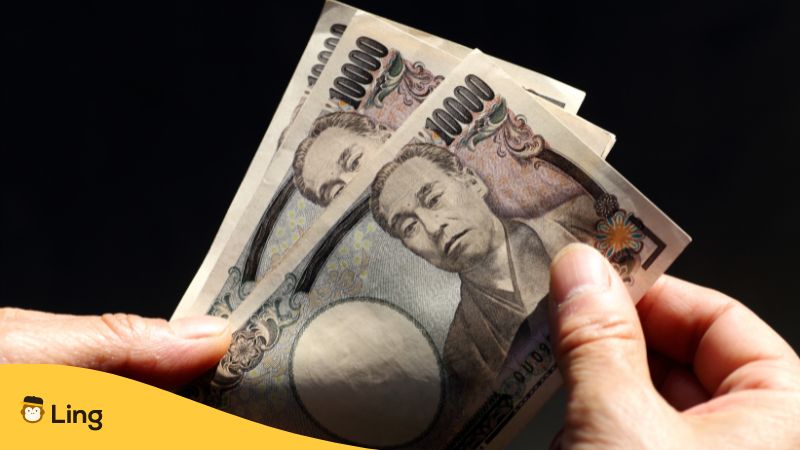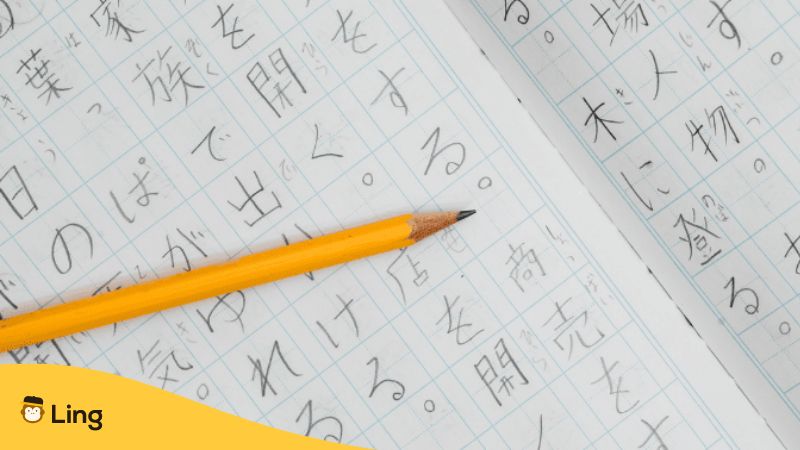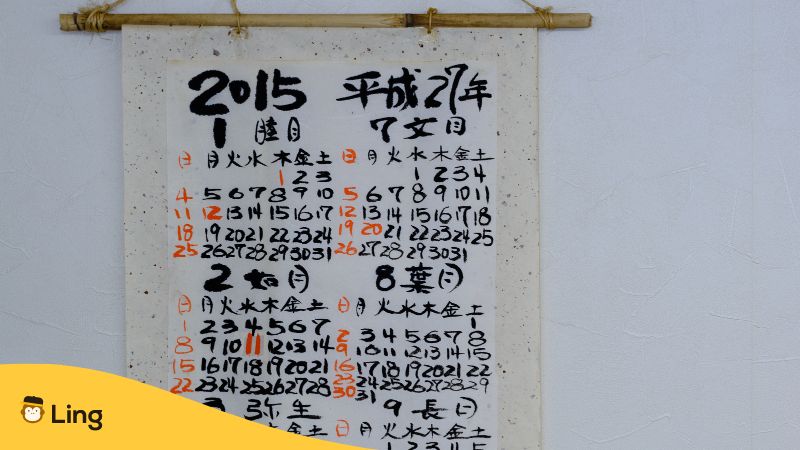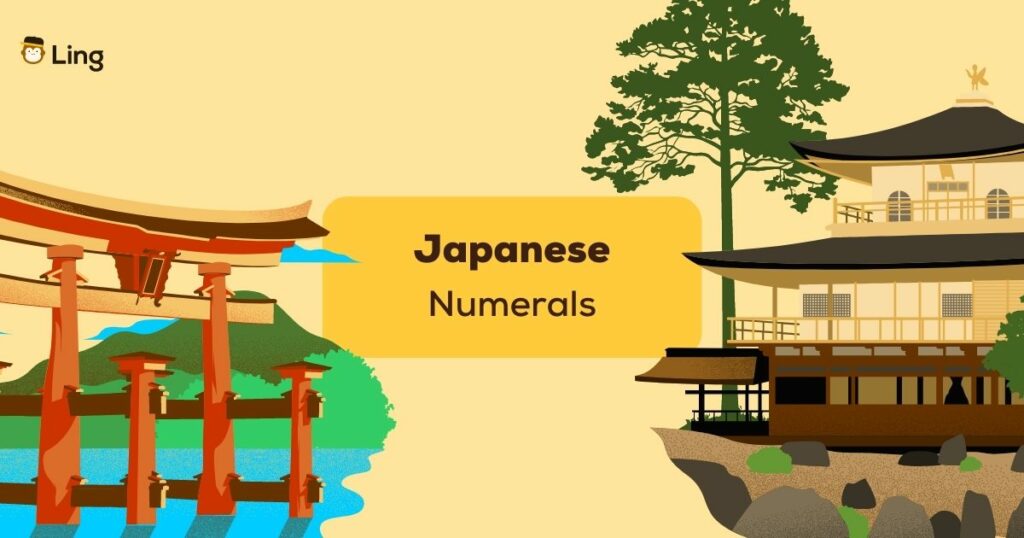You may feel hesitant to learn Japanese numerals at first, and that was what I thought as well while I was learning Japanese since they seem complicated, but trust me, they are actually quite easy to learn! In the Japanese numerals system, there is an order that everyone can easily understand.
In this blog post, we are going to learn the Japanese number system and Japanese counting system with their writing and reading. But first of all, I must say that there are two ways of reading Japanese numerals: Sino-Japanese numbers (On reading) and native Japanese numbers (Kun reading). So there are two different ways to read the same kanji in numbers from only 1 to 10. Let’s start learning Japanese and its numerals by explaining them.
What Are The Native Japanese Numbers
There are many ways to learn Japanese, and there are the best ways to start becoming a Japanese language master. For many people, memorizing numbers is the easiest. Native Japanese numbers are only used from 1 to 10. You can use these to count everything except money, time, and people.
So, if you don’t know the correct counter (I will explain it right after), use these numbers! Native Japanese numbers end in つ (tsu) except for 10 とう (tou). These numbers’ pronunciation is also known as Kun reading in Japanese language resources.
- 1 一 ひとつ hito(tsu)
- 2 二 ふたつ futa(tsu)
- 3 三 みっつ mit(tsu)
- 4 四 よっつ yon(tsu)
- 5 五 いつつ itsu(tsu)
- 6 六 むっつ mut(tsu)
- 7 七 ななつ nana(tsu)
- 8 八 やっつ yat(tsu)
- 9 九 ここのつ kokono(tsu)
- 10 十 とう tou
What Are The Sino-Japanese Numbers
Sino-Japanese numbers are more commonly used in the Japanese language. It is also known as the On reading. The thing you have to know about Sino-Japanese reading is that they need to combine with counter words in order to count nouns like objects. As for zero, the Japanese reading is 零 (rei), but saying ゼロ (zero), as in the English language, is more often used.
- 0 零/〇 れい/ゼロ rei/zero
- 1 一 いち ichi
- 2 二 に ni
- 3 三 さん san
- 4 四 し shi
- 5 五 ご go
- 6 六 ろく roku
- 7 七 しち shichi
- 8 八 はち hachi
- 9 九 きゅう kyu
- 10 十 じゅう juu
Fun Fact: For the numbers 4 and 7, it is preferred to say よん (yon) and なな (nana) rather than し (shi) and しち (shichi). The reason why is that shi is also the pronunciation of the Japanese word death (死), which makes it an unlucky reading for Japanese people.
Similarly to that, きゅう (kyu) is also considered unlucky when it is pronounced like ku, because it is a homophone for suffering (苦). In contrast, seven and sometimes eight are considered lucky numbers in Japanese.

How To Count In Japanese
Once you learn the first ten numbers in Japanese, it is a piece of cake to count to 100. This is just somewhat similar to how the Japanese have learned their alphabet. Because it has a system like you are putting the numbers between 0-10 in order to form the numbers until 100.
Example: 11 is 十一 (juuichi) so put 10 十 (juu) first and then bring 1 一 (ichi).
15 is 十五 (juugo) again put 10 十 (juu) first and then bring 5 五 (go).
When you get to twenty, it is the same system, but first, start by counting the 10s in that number.
Example: 20 is 二十 (nijuu) there are two 10s in twenty.
26 is 二十六 (nijuu roku) put 2 and 10 first (because there are two tens in twenty) and then bring 6.
And it goes on like this up to 99. 100 gets a new word: 百 – ひ ゃ く (hyaku).
Cheatsheet For Japanese Numbers
You can have a look at this quick and helpful list in case you don’t remember some numbers, especially the big Japanese numbers. Don’t forget to apply the grammar rule we have just mentioned above!
| Number | Kanji | Hiragana | Romaji |
| 0 | 零 / 〇 | れい / ゼロ | rei / zero |
| 1 | 一 | いち | ichi |
| 2 | 二 | に | ni |
| 3 | 三 | さん | san |
| 4 | 四 | よん | yon |
| 5 | 五 | ご | go |
| 6 | 六 | ろく | roku |
| 7 | 七 | なな | nana |
| 8 | 八 | はち | hachi |
| 9 | 九 | きゅう | kyu |
| 10 | 十 | じゅう | juu |
| 20 | 二十 | にじゅう | nijuu |
| 30 | 三十 | さんじゅう | sanjuu |
| 40 | 四十 | よんじゅう | yonjuu |
| 50 | 五十 | ごじゅう | gojuu |
| 60 | 六十 | ろくじゅう | rokujuu |
| 70 | 七十 | ななじゅう | nanajuu |
| 80 | 八十 | はちじゅう | hachijuu |
| 90 | 九十 | きゅうじゅう | kyujuu |
| 100 | 百 | ひ ゃ く | hyaku |
| 1,000 | 千 | せん | sen |
| 10,000 | 万 | まん | man |
| 100,000 | 十万 | じゅうまん | juuman |
| 1,000,000 | 百万 | ひゃくまん | hyakuman |
| 10,000,000 | 千万 | せんまん | senman |
| 100,000,000 | 一億 | いちおく | ichioku |
| 1,000,000,000 | 十億 | じゅうおく | juuoku |
| 1,000,000,000,000 | 一兆 | いっちょう | icchou |

Most Common Japanese Counters
Counterwords specify what kind of object you are counting in Japanese. There are many forms of counters in the Japanese language, literally for everything. Do you really have to learn them? Yes, you do. Don’t worry. There are some tips to help you learn your way around it.
Let’s say you don’t know the counter for an object; then you can use 一つ(hitotsu) or 二つ(futatsu) to count your objects up to 10. This will save you a lot of trouble if you memorize the Native Japanese numbers.
There is another thing to pay attention to is that some numbers conjugate differently with certain counters.
3 (三) changes the first letter of any counter word from the “h” column of the kana chart to “b” or “p” like in 三分 (sanpun) which means “three minutes.”
6 (六) changes the “h” kana to “pp” like 六匹 (roppiki), which means”six animals.”
8 (八) changes “h” counters the same as 6, most of the time. This is not really a rule, but it is common enough to help you when you are getting started.
Sometimes, the less common readings of 4, 7, and 9 are used with certain counters, like 七時 (shichiji), which means “7 o’clock”.
Now, if that’s out of the way, here are the most common counters you should definitely know:
- 人 (jin / nin) = People
- 頭 (tō) = Large animals
- 羽 (wa) = Birds and rabbits
- 匹 (hiki) = Small animals (cats, dogs, fish, insects, etc.)
- 枚 (May) = Fine and flat objects (stamps, sheets, etc.)
- 台 (dai) = Technological objects (cars, television, etc.)
- 本 (hon) = Long and cylindrical objects (pencils, fingers, trees, umbrella, etc.)
- 個 (ko) = Very small objects
- 着 (chaku) = Clothes
- 冊 (satsu) = Related objects (books, dictionaries, magazines)
- 足 (soku) = Objects worn on the feet (socks, shoes, etc.)
- 切 れ (kire) = Slices (of cake, bread, ham, etc.)
- 杯 (hai) = Liquids contained in containers
- 錠 (jō) = Pills, capsules, round drugs
- 軒 (ken) = Buildings
- 階 (kai) = Floors
- 番 (ban) = Numbered objects (station platforms, buses)
- 番 (ban) + 目 (me) = Ranking (1st, 2nd etc.)
- 回 (kai) = Frequency (once, twice, etc.)
- 年 (nen) = Years
- か 月 (kagetsu) = Month
- 週 間 (shūkan) = Weeks
- 日 (ka / nichi) = Days
- 時間 (jikan) = Hours
- 分 (fun / pun) = Minutes
- 秒 (byō) = Seconds
- 歳 (sai) = Ageumbers In Japanese
Japanese Counters For People
For one person, you say ひとり (hitori), and for two people, you say ふたり (futari). But usually, when counting people in Japanese, you use the counter 人 (nin) if there are three or more people, so any number after that is the Sino-Japanese number system followed by 人, for example, 三人 (sannin) means “three people.”
Japanese Counters For Long Objects
For long, thin objects, such as pencils, chopsticks, or bottles, the counter you should use is 本 (hon). For example, 四本のペン (yon hon no pen) means “four pens.” Also, don’t forget to put の (no) right before the object. 本 (hon) is also the counter for things like roads, rivers, and train tracks, anything that travels that is very long and thin. It can also be used for long-distance phone calls and travel routes.
Yes, normally 本 (hon) means “book” in Japanese, yet it isn’t the counter for books (that would be 冊 (satsu) which is the counter word for bound objects, such as mangas and books).
Japanese Counters For Small Objects
When counting small objects, you should use the cıunter 個 (ko) together with the number. And it can also be used for round objects, like apples. For example, リンゴ二個 (ringo niko) means “two apples.”
Japanese Counters For Animals
When counting small animals like birds, cats, and dogs, you should use 匹 (hiki). On the other hand, for larger animals, such as horses and elephants, you should use 頭 (tou). Also, don’t forget to put の (no) right before the object.
For example, 三頭の馬 (santou no uma) means “three horses”. 三匹の犬 (sanbiki no inu) means “three dogs”. Also, remember the change from ‘h’ to ‘b’ in hiki.
Japanese Counters For Mechanical Objects
Any kind of technological or mechanical devices can be listed under this category, such as cars, bikes, washers, and dryers, and your video game console has a counter word in Japanese. You should use 台 (dai) for these objects. Also, don’t forget to put の (no) right before the object. For example, 二台の車 (nidai no kuruma) means “two cars”.
Japanese Counters For Units of Time
To express time in Japanese, yes, you have to use counters! You should express seconds with 秒 (byou), minutes with 分 (fun or pun), hours with 時 (ji), and the length of time with 時間 (jikan). When it comes to months, you can use 月 (getsu), and for years you use 年 (nen).
Other Japanese Counter Words
Some other Japanese counters you can come across often are 枚 (mai), 回 (kai), and 階 (gai). 枚 is used to count flat objects, like paper. 回 is used to express the number of times, like the number of times in a week you go out. 階 is used to count the number of floors in a building. Just keep them in mind, just in case!
Japanese Ordinal Numbers
Japanese ordinal numbers express order or sequence, such as the first, second, and third. In Japanese, you should add 第 (dai) right before the number.
- 第一 (dai ichi) – First
- 第二 (dai ni) – Second
- 第三 (dai san) – Third, and so on.
For numbers followed by a counter word that means a sequence, you can add 目 (me). So, “for the first time” would be 一回目 (ikkai me). And, 三人目 (sannin me) means “third person.”

What Are The Days Of The Month In Japanese
After counters, this may be the second difficult aspect of the Japanese numbers. The days of the month can be pretty inconsistent, specifically the first ten days. The first ten days are more like the Native Japanese counting system, and the good news is they are written in hiragana. I think it would be better just to memorize them.
The Days Of The Month In Japanese
- 1st – ついたち (tsuitachi)
- 2nd – ふつか (futsuka)
- 3rd – みっか (mikka)
- 4th – よっか (yokka)
- 5th – いつか (itsuka)
- 6th – むいか (muika)
- 7th – なのか (nanoka)
- 8th – ようか (youka)
- 9th – ここのか (kokonoka)
- 10th – とおか (tooka)
- 14th – じゅうよっか (juuyokka)
- 20th – はつか (hatsuka)
- 24th – にじゅうよっか (nijuuyokka)
The rest of the month just follows the regular number stacking system and plus 日 (nichi), for example, 二十三日 (nijusan nichi) means “23rd of the month”.
Wanna Learn More About Japanese?
Do you want to learn Japanese, but you are unsure where to start? Well, the Ling app is an incredible platform that you must check out today!
The Ling app is a language learning app that includes Japanese and 60+ other languages. This app is not overwhelming to use, and you won’t need to commit many hours just to learn something new in a day.
In fact, the Ling app is designed to save you time while learning languages since it has practical and concise lessons guaranteed to help you learn Japanese in 15 minutes per day! And the best part is you can try it out now for free. Get it from the App Store or Play Store now!





















